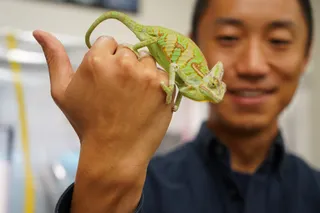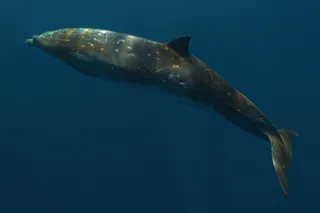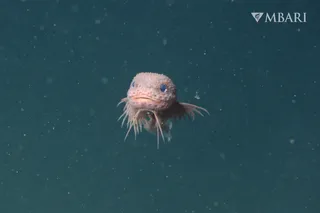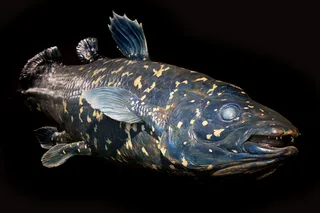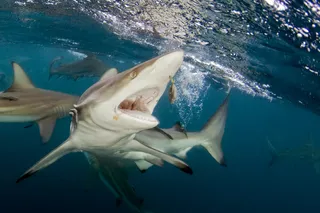A lot of people are interested in my Slate story yesterday on the arsenic aliens. It's still the most-read story of the site at the moment, Slashdot and others have linked to it, and I'm doing some more radio and maybe other media (details to come). I think that what has gotten so much attention to the story is just how many scientists had such critical things to say. The verdict was not unanimous, but the majority was large. I was only able to quote a tiny bit from just a few of the scientists I communicated with, so I thought, for those who'd like to delve more deeply into this, that I'd post a list of everyone I spoke to, and, when possible, post their reactions. A lot of scientists replied to me by email or even attached word files where they went on at length. I put together a similar dossier for another biological controversy--the search for soft tissue in dinosaur fossils--and I think (or at least hope) that this sort of exercise can help further discussion. Of course, as I and others have reported, the authors of the new paper claim that all this is entirely inappropriate. They say this conversation should all be limited to peer-reviewed journals. I don't agree. These were all on-the-record comments from experts who read the paper, which I solicited for a news article. So they're legit in every sense of the word. Who knows--they might even help inform peer-reviewed science that comes out later on. I'm going to post everything under the fold here, but it will take a little while. I'll just re-save the post every time I add a new one, and I should be done before too long. So keep refreshing, or just drop by again later... PS--Science has made the paper at the center of this controversy free. Get it here. (Note: I have fixed spelling and punctuation and added clarification within brackets.)
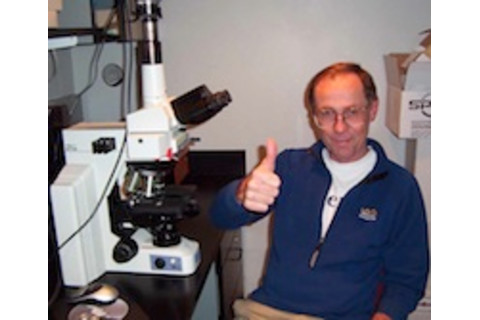
1. Norman Pace, University of Colorado: I don't have much to add to the buzz that's around. As-DNA [DNA with arsenic in its backbone] is unlikely because of the instability of the arsenate linkage as well as electronic properties inconsistent with substrate specificities of the many enzymatic activities involved in replication, transcription, etc. These clearly are not particularly novel organisms in essence; they are gamma-group proteobacteria, related fairly closely to our well-studied zoo organisms such as Escherichia coli. Low levels of phosphate in growth media, naive investigators and bad reviewers are the stories here. [As an afterthought, Pace send another email linking to UBC microbiologist Rosie Redfield's blog post] A good critique.

2. Shelley Copley, University of Colorado: I think this paper should not have been published. What I'm seeing in the media is that people understand this paper as showing that all of the P in the DNA of this bacterium is replaced by As, and that this is a new form of life. It's being vastly over-hyped. [Copley attached a file with more lengthy comments, which I'm posting below] This paper describes the isolation of a bacterium from sediments in Mono Lake that grow only when either arsenate or phosphate is added to the medium. This finding gave rise to the idea that the cells might be using As in place of P. The authors focused on whether P in DNA was replaced by As, since that would indeed be a stunning finding. However, the data do not show that all of the P in DNA has been replaced by As, which seems to be the interpretation that is playing out in the media. To be fair, nowhere in the paper do the authors make a quantitative statement. They say that the bacterium “can vary the elemental composition of its basic biomolecules by substituting As for P”. It is unclear whether they mean complete substitution or partial substitution, and whether substitution at a level of, say, 1% would actually be very exciting. Based on the data in the paper, it appears that there may be some low level incorporation of As into DNA, but the data are not convincing. Experiments that would have been conclusive were not performed, and some of the data are of dubious quality and were not interpreted critically. The paper raises a lot of questions that should have been addressed by the authors before this work was published (and should have been caught by the reviewers and editors). Details: I have a number of issues with the quality and interpretation of the data. The most serious of these include the following. 1) Figure S2 shows that the -As/+P cells have an As/C ratio of about 1.5 x 10-5, while +As/-P cells have an As/C ratio of about 3 x10-5. -As/+P cells have a P/C ratio of about 0.005, while +As/-P cells have a P/C ratio of about 0.002. These are not very big differences. Furthermore, these data suggest that the cells actually contain more P than As under both growth conditions. However, Table 1 shows that -As/+P cells contain 0.19% As and 0.02% P by dry weight. These data are not consistent with the data shown in Figure S2. (By the way, since the atomic weight of As is 2.4x that of P, the molar ratio is actually 4 rather than 10. But the data are still not consistent with Figure S2.) The interpretation of these results is complicated by the fact that the cells have different sizes when grown under the two growth conditions, and especially because of the existence of large inclusions of unknown composition in vacuoles when cells are grown +As/-P. In any case, a demonstration that the cells contain As is not equivalent to a demonstration that arsenate has been incorporated into the DNA. The fact that As is found in cells that are growing in 40 mM AsO4- is not surprising. 2) Calculating that there is enough As in the cells to supply the backbone for DNA does not constitute evidence that arsenate has been incorporated into DNA or into “arsenylated analogs of NADH, ATP, glucose, acetyl-CoA”, as claimed in the paper. Small molecules such as NADH, ATP, glucose 6-phosphate, and CoA should have been isolated and analyzed. 3) The evidence that As has been incorporated into DNA is weak. ICP/MS analysis of nucleic acids that have been extracted and precipitated with ethanol suggests that the amount of As in nucleic acids from +As/-P cells is actually lower on a ppb basis than the amount in –As/+P cells (see first two lines of Table S1). Surprisingly, the authors detect 118 ppb As in DNA from –As/+P cells; they don’t comment on that, but it would be really surprising if that DNA really contained As. Furthermore, measuring P and As on a ppb basis is a bad way to do it; pellets obtained by precipitating nucleic acid contain a variable amount of salt that can be diminished by washing, but the pellets were not washed in these experiments. So the absolute levels of P and As (expressed as ppb) are hard to interpret because much of the material in the pellet was probably salt. (There are additional data in Table S1 for analyses done on “GFAJ gel” and “RNA gel” samples, but the text doesn’t define what the term “RNA gel” means, so I don’t know how to interpret these data.) The best way to show that As has been incorporated into DNA would be to purify the DNA, fragment it, and show that the fragments contain As in the backbone by mass spectroscopy. The experiment reported in the paper is inadequate and difficult to interpret. First, the authors do not comment on the odd observation that the DNA from +As/-P cells is smaller than that from the -As/+P cells. This could be an artifact of the overloading of the gel in the right lane, or it could reflect fragmentation of the DNA at very infrequent sites of As incorporation. Since the sizes of the molecular weight markers in lane 1 were not defined, it is hard to say how big the band attributed to the genomic DNA is, so this point is just unclear. The authors excised bands of DNA from the gel, dried them, and analyzed them by NanaSIMS. Figure 2 reports values for 75As:12C; the band from the +As/-P cells has a value that is about 2-fold higher than that of the band from the -As/+P cells. These numbers are not very relevant because the 12C signal is primarily due to the agarose. Furthermore, there was no effort made to quantify the DNA in the band, so the ratio of 75As:12C is fairly meaningless. More relevant are the data in Supplementary Table 2 showing that the ratio of As/P is 6-fold higher in DNA from +As/-P cells than in DNA from –As/+P cells. This alone shows that there can’t be very much As in the DNA from the +As/-P cells; if there were, this ratio would be very much higher than 6, since we should be able to assume that the DNA from –As/+P cells contains virtually no As. But these data again are hard to interpret because the “background” level of P measured elsewhere in the gel (820 ppb) is actually higher than the level of P measured in the band from the +As/-P cells (299 ppb). Ideally, the background levels of P and As should be subtracted from the data before the ratio is calculated, but that can’t be done if the background is higher than the experimental measurement. Finally, showing that the K-edge EXAFS signature of As in the cells suggests that it is present in an ester linkage does not constitute evidence that arsenate has been incorporated into DNA. 4) I am puzzled by the demonstration that the cells grow with either added phosphate or added arsenate, but don’t grow with no added phosphate or arsenate. I don’t believe that the explanation is that the cells can swap As in place of P in DNA and in metabolism. The data suggest that at most only a small amount of As is incorporated into DNA (and that is only a tentative conclusion), so it seems unlikely that there just wasn’t enough phosphate to support DNA synthesis and arsenate compensated for a significant deficit. (In fact, there was 3 µM phosphate in the medium when phosphate wasn’t added.) I wonder if there is a trace metal contaminant in both the arsenate and phosphate that is required for growth?
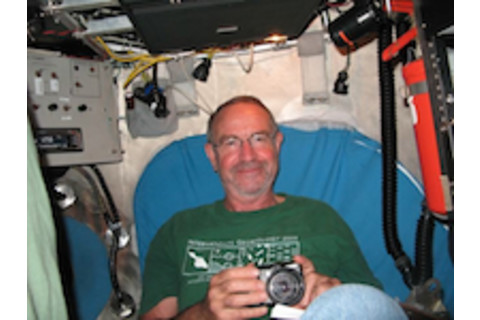
3. Roger Summons, MIT [NB: When I contacted Summons I sent him blog posts by Redfield and Alex Bradley of Harvard] Alex Bradley, who posted the second critique is a former Geobiology student from our laboratory at MIT and is now at Harvard. He does a good job. In particular, the experiment he suggests at the end of his piece would have been intuitive to any one with a natural products chemistry background. Assay the putative As-containing DNA, or any of the oligonucleotides derived from it, by high resolution mass spectrometry using MALDI TOF or HPLC-MS with a QTOF. The mass spectra would unambiguoulsy confirm or disprove the presence of As.
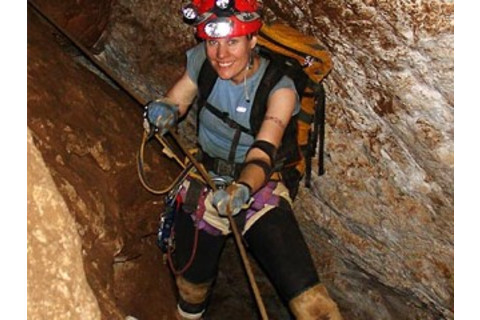
4. Hazel Barton, University of Northern Kentucky [Barton does not appear in the article. She is a leading authority on the bizarre microbial life in caves] Well, I read through the paper and I guess these are the things I just don't understand. 1) If the organism came from Mono Lake, which has a higher phosphate concentration than arsenic, why on Earth would it adapt by creating an arsenic-DNA backbone - rather than the more parsimonious explanation of developing As resistance (especially given that members of this group are known to detoxify very high levels of As already) 2) The authors state that the members of this group are arsenic-accumulating species, yet they make absolutely no attempt to determine if the large vacuoles associated with this organism contain arsenic or if accumulated arsenic is contaminating all their samples and providing the As 'spikes'. 3) All of the extraction assays are remarkably crude and do nothing to separate any contaminating arsenic from the samples - surely a must if you are trying to argue that arsenic is part of the molecular structure of your DNA and not simply associated. A more elegant, simpler and interpretable experiment would be a cesium chloride gradient - originally used to demonstrate the semi-conservative nature of DNA replication. If As formed the DNA backbone, then the DNA in the As-grown cells would be much heavier. 4) A number of the references in the paper were either generic or out-of-date. This is usually a hint that maybe the folks aren't up on the most relevant material - such as the phospholipid alterations seen in Sargasso Sea populations (I think I alluded to that in my past emails). I would like to state that I'm not happy with the Rosie Redfield review. It's important that the reviews of individuals who are not experts in the field do not have as has as much weight as that of the original reviewers, no matter how public the review. I felt that her review had an equal number of flaws in it. The Alex Bradley review was good. The arsenic dissociation rates would pretty much be a nail in the coffin if the investigators did nothing to stabilize the structure. To me, the paper represents something that all graduate students are told to think about - develop experiments that are aimed to reject your hypothesis, not support it. If you cannot reject it, then you must accept it. These experiments in most cases were shown to 'support', not test the central hypothesis. It's a newbie mistake and the mentors, reviewers and editors are as much at fault for not catching that as anyone.

5. Michael Russell, Jet Propulsion Laboratory [Another unsung commentator, Russell studies possible routes to the origin of life.] I hadn't seen them [Redfield and Bradley's comments] but they look good and fair to me. My worries were in relation to the astrobiological claims and limited to the fact that cosmic abundance ratios are P:As = >1000:1 and that As would always be in reduced form (as arsenides not arsenate) on a pre-(bio)oxygenated planet whereas phosphate is always stable in relation to a magnesium-iron-silicate mantle, lithosphere and crust. [In other words, arsenic would be an unlikely ingredient in the origin of life on other planets.]
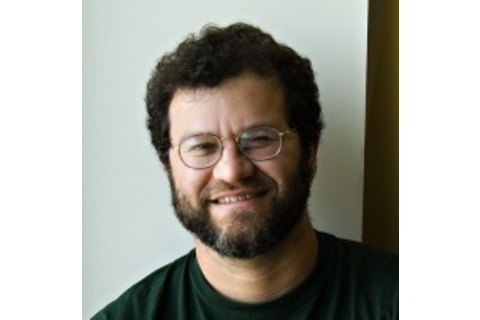
6. Jonathan Eisen, University of California, Davis [I asked Eisen both about the science and the refusal of the co-authors to reply to criticisms, since Eisen is, along with being a leading microbiologist, an advocate of transparent scientific communication.] I note two things about the paper: 1. There almost certainly would be better ways to show that the DNA has arsenic in it instead of phosphate. That has been one of the critiques out there and I think that is very valid. For a paper in Science they should have done other types of analyses to show As in DNA. 2. The fact that their media has P in it is VERY disconcerting to me. In essence this would be like claiming you found a catalytic RNA in an extract without first removing protein. They could almost certainly have found some way to clean out more P from the media. I note that it really seems to be quite sick on just As and then much better with more P. At best, the results should be considered very preliminary. In many cases it is fine to have preliminary exults published in high profile journals, and I am not going to critique the editors here per se. But there is a big problem here in that the words in the paper do not even hint at the preliminary nature of this work. They are very conclusive. And that I think the editors should have caught and fixed or not allowed the paper. Given the preliiminary inconclusive nature of the results, the real problem here is the presentation to the press by the authors and NASA and cohort. First, they make claims without any real caveats. And then, even worse, they add new claims well beyond the paper like "New form of life" . This is clearly not a new form of life. at best it is a bug that humans have engrained to do something possibly unique with it's chemistry. Should we then say at Dolly the sheep is a new form of life because it was a clone? As for the smack downs, some are a bit over the top and too personally critical of the players. But I think NASA and the authors set themselves up for some of this by their excessive claims in the press. If they then say they will not address the responses except in journals that is absurd. They carried out science by press release and press conference. Whether they were right or not in their claims, they are now hypocritical if they say that the only response should be in the scientific literature.
[The patient zero of the arsenic critics. I called Redfield and talked to her about her reactions to the paper. You can read her ongoing comments at her own blog.]

7. Rosie Redfield: University of British Columbia

8. Forest Rohwer, San Diego State University [A positive comment, with serious reservations.] I am skeptical, but with my fingers crossed that the authors are correct. It would be really cool if such a bug existed. There are a number of microbes that have gotten around P-limitations by replacing the P in their lipids. I also don't buy the completely biochemical arguments that arsenic could not replace P in DNA...there is always a work around that life can find. That said, the experimental evidence in the paper is pretty weak. The authors have done a good job of providing many supporting works, but none of the arguments are very convincing on their own. Let's hope that when the dust clears, they are correct. If nothing else, the authors have gotten people thinking about some basic assumptions.

9. John Roth, University of California, Davis The DNA results looks strange to me. In the figure it looks as if they heavily overloaded the gel with DNA from the -As/+P stain and underloaded DNA from the +As/-P grown strain. (The latter shows no RNA, as I understand the gel.) The size difference of the DNA bands could just reflect the overloading, but I'm dubious. This is important stuff- why not run a nice gel, evenly loaded and get a bunch of pure DNA. It gets worse when you look at the atomic ratios printed below the gel. There's really very little difference in the ratio of As/C (both of those numbers need to be multiplied by 10e-6). In the supplement they say that the ratio of As/P for the best samples grown +As/-P is a few percent. This is at odds with the impression given that a lot of As is incorporated. However even a few percent would be impressive if true. I worry about the mass spec based on the amounts of material reported in the supplement. My impression is that there isn't much DNA or RNA in the samples they tested --There's as much As and P in the gel blank (taken from somewhere outside the bands) as there is in the bands. If all of these measurments are above a high background of intrinsic contaminating atoms, I don't see how one can interpret this. Further evidence that something is off is that the mass spec measurements show considerable Arsenate in DNA taken from cells grown in excess phosphate and no provided Arsenate. This may not be surprising if my interpretation of the gel blank is correct (as many As and P there as in the band). So, unless I've badly misinterpreted the manuscript. I'd say that they need to purify a substantial quantity of DNA and clean it up well. If they do mass-spec so they see bigger fragments of DNA with As in place of Phosphate, it might get impressive. The curious thing is that if getting powerful data is so easy, why was this printed in its current form? Sorry to sound so grumpy, but it's our ox being gored. I suspect that NASA may be so desperate for a positive story that they didn't look for any serious advice from DNA or even microbiology people. [Roth sent a follow up email] I wonder if maybe they did the DNA mass spectroscopy using plugs of agar taken from the gel and never extracted the DNA/RNA. The mass of the gel is huge so the number of atoms of DNA/RNA is negligible compared to the composition of the gel -- solid agarose. That may be why the composition of the blank gel slice is so similar to that of the slices with the DNA/RNA.

10. Gayle Woloschak, Northwestern University [Woloschak is an expert on the type of x-ray microscopy that was one of the methods the scientists used to identify arsenic in the DNA. This is the only unreservedly positive response I got.] This group used the synchrotron at Stanford for both XANES and XFM (X-ray fluorescence microscopy) analysis of their bacteria. The studies were well-done; XANES was done to identify which valence (form) of arsenic was present in the organisms, and XFM was done to determine which elements were present at what concentrations in the cells. The most important finding was not just the high level of arsenic but also the very low perhaps undetectable levels of phosphorus. In human cells, phosphorus makes up a large fraction of the cell, mostly due to the phosphorus in DNA but also due to many phosphorus-containing proteins. The work is intriguing because the arsenic appears to have totally replaced phosphorus in these cells. This is a seminal finding in the literature and will change the way we think about how genetic material functions. It will now be interesting to determine whether the genetic material functions in the same way with arsenic as it does with phosphorus and also whether arsenic can replace phosphorus on RNA and proteins as well.

11. George Cody,Carnegie Institution I have been aware of the hypothesis of the possibility of substitution of arsenate for phosphate for some time, Felissa has given talks on this subject at Gordon Research Conferences I have attended and at my home institution. The issue that always comes up is the facility of hydrolysis of arseno ester bonds (as noted in the 2nd blog you sent me- I could not access the first) and stressed by Steve Benner. I agree with the second blogger that the correct experiment to do would be mass spectrometry which would unambiguously determine whether an arsenate backbone was present or not in the DNA. I cannot accept this claim until such an experiment (easily done) is performed. The second blogger also makes an excellent point regarding what constitutes minor amounts of phosphate. I recall a summer intern in my laboratory accidently culturing up a bacterial biofilm from a solution of concentrated fumarate, urea, and ammonium hydroxide in ultra-pure water (not surprisingly ammonia oxidizing bacteria); we were surprised but evidently the microorganisms were able to obtain the necessary nutrients, e.g. phosphate, from somewhere to grow to a point be being readily observed. Microorganisms can do quite a bit with a little. I recall a report in Nature by Benjamin Van Mooy (WHOI) where it was shown that certain marine organisms could use sulfate in their lipids when the availability of phosphate is very low. Actually, if arsenate had substituted for phosphate anywhere, I would have looked at the lipids first, again using mass-spectrometry. Philosophically, if it turned out that an organism could use arsenate in place of phosphate, this would not in my opinion rewrite the rules of life as we know it; aside from the hydrolysis issue, arsenate is chemically very similar to phosphate. A careful chemist could likely synthesize DNA oligomers with an arsenate backbone. As I understand it this is precisely why arsenate is a poison. Ultimately, the idea of a shadow biosphere is interesting, but it would have to be demonstrated to be truly distinct from extant biochemistry, e.g. truly novel metabolic pathways, different bases for coding, different amino-acids or better still enzymes that were not based on amino-acids at all. As the old adage goes "Extraordinary claims require..." [...etc.] Likely what I have said mirrors what you have heard from others.

12. Steven Benner, Foundation for Applied Molecular Evolution [Benner had these comments last week, in the run-up to the NASA press conference on Thursday, where he appeared to express his skepticism] This work provides an important system to advance our understanding of how terran life might adapt to environments rich in arsenate but scarce in phosphate. The reported microbe may be an excellent system to learn the extent to which this adaptation reflects mechanisms to tolerate arsenate, whether the microbe has novel metabolic pathways or biostructures that incorporate arsenic and, most exciting, whether the organism has found ways to substitute arsenate for phosphate in standard biomolecules. The data in the paper report a remarkable feature of this organism, an ability to grow with added phosphate (without added arsenate), an ability to grow with added arsenate (without added phosphate), but an inability to grow in the absence of both added arsenate and added phosphate. Back of the envelope calculations suggest that the amount of phosphate that appears to be present when phosphate is not directly added (this phosphate presumably comes from contamination in the culture mixtures) is barely sufficient, if sufficient at all, to support the inventory of ribosomal RNA, transfer RNA, DNA, and metabolic phosphate required for standard cellular metabolism. How this organism has acquired this feature remains unknown. I do not see any simple explanation for the reported results that is broadly consistent with other information well known to chemistry. In particular, any hypothesis that arsenate might replace phosphate in biomolecules such as DNA (where arsenate diesters would replace phosphate diesters) or NADH and ATP (where pyroarsenate would replace pyrophosphate) must manage known rates for the hydrolysis of arsenate esters and arsenate anhydrides in water. Arsenate esters fall apart in water with half lives conveniently measured in minutes. Arsenate anhydrides fall apart in water with half lives measured in seconds. In contrast, the uncatalyzed rate of hydrolysis of phosphate diesters takes millennia. These rate constants are well measured, and are a cornerstone of physical organic theory that unifies much that is known about phosphates, arsenates, and the analogy between these two. While it is conceivable that a living system might have second and third molecules to interact with such novel arsenate-containing compounds to stabilize them within a cell, it is not clear that those interacting molecules would remain in contact with novel arsenate DNA following the procedures (phenol and chloroform extraction, ethanol precipitation) used to isolate products shown, for example, in the gel in Figure 2. Nor is it clear why the band in the gel would be so sharply defined if it were arseno-DNA associated with stabilizing molecules. Thus, it remains to be established that this bacterium uses arsenate as a replacement for phosphate in its DNA or in any other biomolecule found in 'standard' terran biology. If, however, the replacement hypothesized in this paper is established by chemical analysis, the result will have sweeping consequences. It will overturn a century of information about the comparative behavior of phosphates and arsenates. It will also demonstrate a type of continuity in biology between two structures having very different properties that is rarely seen. In this case, DNA with phosphate linkers, not requiring the stabilization of interacting molecules, will have continuously morphed into a DNA with arsenate linkers that requires many of these interacting molecules, functioning throughout the morphing process. From a biochemical perspective, this will be more than remarkable. Because the hypothesis of arseno-DNA contradicts expectations based on so many well established chemical facts, I expect that the hypothesis will be perfunctorily dismissed by most biological chemists. However, perfunctory dismissal of apparently fantastic hypotheses is a way of guaranteeing that even valid discoveries are overlooked, and therefore should not be done routinely. The book lays out a process that should be followed in managing such hypotheses. In this case, the process is easy to apply. The molecules isolated in the band boxed in lane 2 of the gel in Figure 1 A should be easily subject to standard tools used in chemistry to determine their structures, just as the structures of any other natural product have been determined. Is the band degraded by acid or base? Is it phosphorylated by DNA kinase? Is it digested by exonuclease? What fragments are generated by each of these processes? Any natural product that can be isolated as cleanly as the band in Figure 2A can have its structure determined. Until this happens, however, the hypothesis would seem to fall into the category of "exceptional" that, as Carl Sagan remarked, requires exceptional support.

13. Bill Summers, Yale University [Summers is an honorary member of this list. He is a biochemist and historian of science--author of the excellent Felix d`Herelle and the Origins of Molecular Biology. He posted an exasperated comment on my Facebook page in response to an update on the arsenic situation, and it seemed to fit in here. He gave me permission to quote him...] Thanks, Carl, for your reporting on this terrible paper.. as soon as I saw the hype, I read the paper... Science (mag) seems to follow the principle that the more startling the claim, the lower their refereeing standards. One week's more work would have allowed the authors to determine the degree of As replacement of P, by, say hydrolysis to nucleotides followed by mass spec. The report of As:C ratios with no estimate of the background was silly, and at best suggests miniscule replacement. With a 1000 fold molar excess of As to P, it is likely that there are rare cases for misincorporation simply on a thermodynamic substrate selection basis.. as one of my colleagues said: "B... S..."


